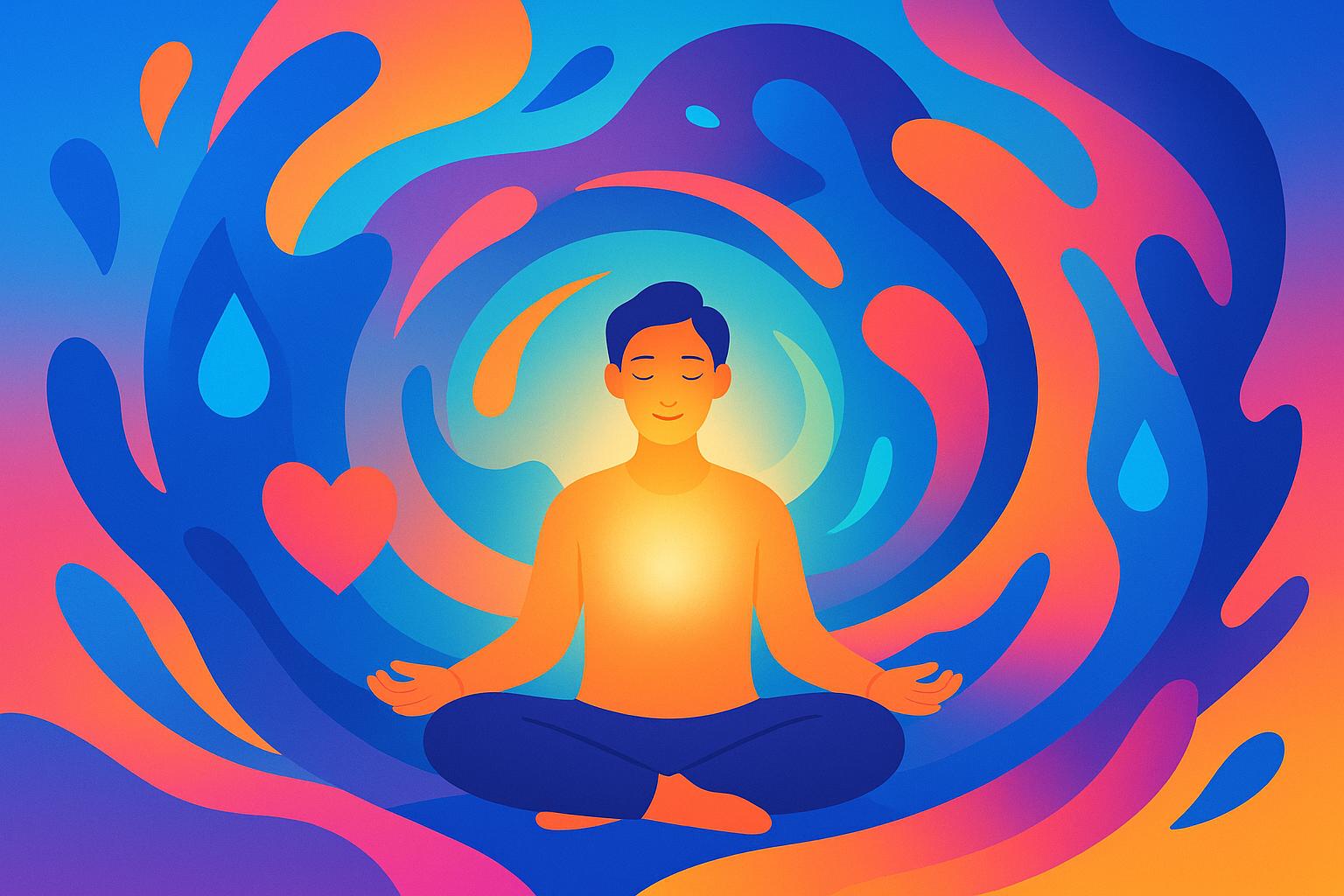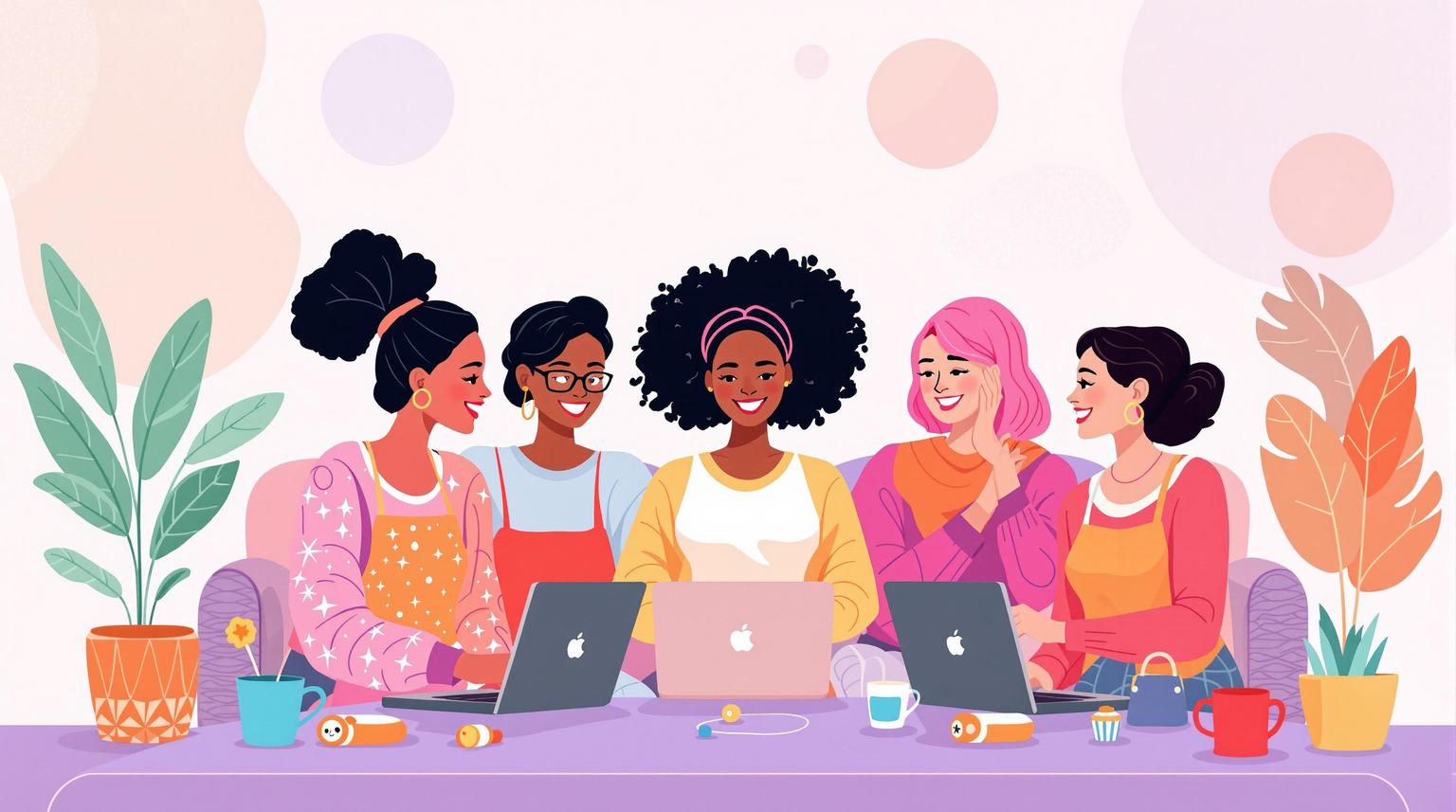: Key Insights
Mental health stigma affects women and men differently. Here's what you need to know:
- Women face higher rates of anxiety (21.9%) and depression (5.4%) compared to men
- More women (34.1%) seek help for mental health issues than men (29.3%)
- Men face greater stigma and are less likely to seek treatment
- Age and location influence mental health stigma patterns
- Gender stereotypes impact how specific disorders are perceived
Key factors driving these differences:
- Social roles and expectations
- Cultural views on mental health
- Access to treatment
- Workplace attitudes
- Public education and awareness
| Gender | Anxiety Rate | Depression Rate | Seek Care |
|---|---|---|---|
| Women | 21.9% | 5.4% | 34.1% |
| Men | 11.3% | 1.7% | 29.3% |
Understanding these gender disparities is crucial for developing targeted strategies to reduce stigma and improve mental health outcomes for everyone.
Related video from YouTube
2. Mental Health Stigma Basics
2.1 What is Mental Health Stigma?
Mental health stigma is society's negative view of people with mental health issues. It's like a scarlet letter that makes people feel "less than."
Stigma's impact:
- Stops people from seeking help
- Causes isolation
- Crushes self-esteem
- Breeds discrimination
Here's the kicker: 90% of people with mental illness say stigma messes up their lives. That's HUGE.
2.2 Past Gender Differences
Mental health stigma used to hit men and women differently:
| Era | Women | Men |
|---|---|---|
| Ancient | "Hysterical" | "Weak-minded" |
| Middle Ages | "Witches" | "Possessed" |
| 19th Century | "Female hysteria" | "Strong and silent" |
| Early 20th Century | Over-diagnosed depression | Under-diagnosed issues |
These old ideas shaped today's views. But the tide's turning.
Take Dorothea Dix in the 1800s. She fought stigma hard, helping set up 30+ new mental health hospitals. Big win.
But we're not done yet. Check this out:
- Bedouin-Arab communities: Women face more stigma
- Older Arab adults: Men report higher perceived stigma
See the pattern? There isn't one. That's why we need a gender lens on mental health stigma.
"There is no country, society or culture where people with mental illness have the same societal value as people without a mental illness." - Wulf Rössler, Author
Ouch. This quote shows we've got a long way to go in fighting mental health stigma for EVERYONE.
3. How We Studied This
We looked at three key studies to understand how gender affects mental health stigma:
3.1 Choosing Studies
1. National Web-Based Survey Experiment
This study used case summaries with varied gender and disorder types. It found:
- Gender-typical cases got more negative reactions
- People were less likely to see these as real mental health issues
2. Population-Based Vignette Study in Uganda
This 2023 study in rural Uganda involved 379 people from 20 villages. It used 8 vignettes and the Personal Acceptance Scale (PAS). Results showed:
| Disorder Comparison | Mean PAS Score | P-value |
|---|---|---|
| Anxiety vs. Schizophrenia | 2.91 vs 1.62 | 0.008 |
3. UK Armed Forces Personnel and Veterans Study
This study looked at barriers to mental healthcare for 1,448 participants (1,229 men, 219 women). It used phone interviews to examine public stigma, self-stigma, and treatment barriers.
These studies give us a snapshot of how gender impacts mental health stigma across different settings and groups.
"There is no country, society or culture where people with mental illness have the same societal value as people without a mental illness." - Wulf Rössler, Author
This quote highlights why studying gender differences in mental health stigma matters. Understanding these differences is the first step to reducing stigma for everyone.
4. How Stigma Differs by Gender
Mental health stigma hits men and women differently. Let's break it down.
4.1 Women's Experiences
Women often get judged for seeking help. Why? Society's ideas about how women should act make it tough to speak up.
A study in rural Uganda found people were more okay with women having depression than men.
This suggests folks might see depression in women as more "normal" because of stereotypes.
4.2 Men's Experiences
For men, stigma often means not getting help. Old-school ideas about being "manly" - you know, the whole "be tough, handle it yourself" thing - are a big problem.
That same Uganda study? It showed less acceptance for depressed men compared to women. This points to a bigger issue: we often overlook or brush off men's mental health problems.
4.3 Comparing Genders
A national web survey experiment spilled some interesting tea:
| Gender-Typical Cases | Reactions |
|---|---|
| Women | More negative feelings, less sympathy |
| Men | Less likely to get help |
Both genders faced more stigma when their issues fit stereotypes. So:
- Women might get more flak for anxiety or depression
- Men might face more stigma for substance abuse
"The role of gender in mental health stigma is significant." - James H. Wirth, Author
Wirth's got a point. We need to think about gender when tackling mental health stigma. Understanding these differences? That's how we build better support and knock down barriers for everyone.
5. What Causes These Differences
Gender differences in mental health stigma stem from a mix of social and cultural factors. Let's break it down:
5.1 Social Roles
Traditional gender roles shape how we view mental health:
- Men are expected to be tough and self-reliant
- Women are often seen as more emotional and open to help
This leads to different outcomes:
| Gender | Impact on Stigma |
|---|---|
| Men | Less likely to seek help, higher self-stigma |
| Women | More open to help, but face more public stigma |
A military study found:
"Women reported more structural barriers related to family responsibilities (e.g., lack of childcare) compared to men." - Military Mental Health Study, 2022
This shows how societal roles create unique challenges for each gender.
5.2 Cultural Views
Culture plays a big role too:
- Collectivist cultures often see mental illness as a family issue
- Individualist cultures focus more on personal responsibility
A youth study revealed:
"Gender differences were found for public stigma, not for self-stigma, suggesting that interventions should focus on gender-sensitive approaches to reduce stigma." - Youth Mental Health Stigma Study, 2021
This highlights how cultural norms affect public perceptions differently for men and women.
Key cultural factors include:
- Face concern: Mental illness seen as shameful for the whole family
- Familism: Mental health issues reflect poorly on the family unit
- Religious and supernatural beliefs: Influence understanding and treatment
A Pacific Rim study showed:
| Cultural Factor | Impact on Stigma |
|---|---|
| Collectivism | Higher stigma, seen as societal burden |
| Face Concern | Hiding issues, avoiding treatment |
| Familism | Mental illness viewed as family failure |
Understanding these cultural nuances is crucial for tackling gender-specific mental health stigma.
sbb-itb-3d00657
6. Effects on Getting Help
Gender impacts how people seek mental health support. Let's dive into who's more likely to get help and the challenges they face.
6.1 Who Seeks Help More
Women are more likely to seek mental health treatment than men:
| Gender | Help-Seeking Intention |
|---|---|
| Women | 85.3% |
| Men | 79.9% |
This trend holds across age groups:
- Young adults (16-24): 80.3% plan to seek help
- Older adults (65-74): 89% plan to seek help
But here's the kicker: intentions don't always translate to action. The World Health Organization says about 450 million people worldwide have mental disorders, but nearly two-thirds don't get professional help.
6.2 Problems Getting Treatment
Both genders face obstacles in accessing mental health care:
1. Stigma
Self-stigma is a major roadblock for everyone. It's that nagging voice that makes you feel ashamed about needing help.
"Anticipated individual discrimination and discrimination qua self-stigmatization are associated with a reduced readiness to seek professional help for mental disorders." - Georg Schomerus, Department of Psychiatry, Leipzig University
2. Practical Issues
Women often face extra hurdles:
- 21% struggle to get time off work for treatment (vs. 15% of men)
- Childcare responsibilities can make appointments tricky
3. Healthcare System Problems
- Not enough mental health services
- Spotty insurance coverage
4. Gender-Specific Barriers
Men:
- Pressure to be "tough"
- Less likely to open up about feelings
Women:
- More likely to face public stigma
- Often juggling multiple roles
A study of UK Armed Forces members found both genders report similar levels of barriers to care. But women were more concerned about mental health issues being on their medical records (52% of women vs. 41% of men).
To boost access to mental health care, we need to:
- Fight stigma through education
- Make services more flexible
- Improve insurance coverage for mental health
- Create gender-specific support programs
7. Multiple Factors and Stigma
Mental health stigma isn't just about gender. It's a complex issue with many moving parts.
7.1 Combined Challenges
When we talk about mental health stigma, we need to look at the big picture. It's not just one thing - it's a mix of factors that can make life tough for some people.
Here's a quick breakdown:
| Factor | How It Affects Stigma |
|---|---|
| Gender | Changes how people see mental health issues |
| Race/Ethnicity | Can add extra layers of bias |
| Income | Higher income can mean more stigma (weird, right?) |
| Sexuality | LGBTQ+ folks face unique challenges |
| Disability | Can make existing stigma worse |
Let's dig in:
Gender + Race: A study of 179 college students found that men and minorities face more stigma. But it's not that simple:
"Men are more likely to experience external stigma in the workplace, whereas women are more likely to experience general external stigma and report experiencing internal stigma."
Culture: In some Asian cultures, talking about mental health can be taboo. For African Americans, distrust in healthcare can be a big hurdle.
Money: A study of 926 people found that richer folks actually had more stigma about mental illness. Why? Maybe it's about thinking people should just "pull themselves up by their bootstraps."
Work: Only 48% of workers feel they can talk openly about mental health with their boss. That's down from 62% in 2020.
Multiple Identities: Having more than one "outsider" identity can make things even harder. Think about a Dalit woman with mental illness in India - she's facing a whole different level of stigma.
What can we do?
- Teach people about how different factors affect stigma
- Create support that fits different groups' needs
- Make it easier to talk about mental health at work
- Study how different factors work together to create stigma
The key? Understanding that mental health stigma isn't just one thing - it's a bunch of factors working together. By tackling it from all angles, we can make real progress.
8. Ways to Reduce Gender-Specific Stigma
Let's dive into some effective strategies to tackle mental health stigma across genders.
8.1 Public Education
Public education is a game-changer in fighting stigma. Here's what works:
- Real stories: Mind's "If this speaks to you" campaign pairs people with mental health issues and artists. The result? Powerful poems that normalize mental health talk.
- Stereotype busting: CALM's "Suicide doesn't always look suicidal" campaign shows that anyone can be at risk. It's not just about outward distress.
- Targeted approach: Focus on key groups like young people and healthcare staff. The Mental Health Commission of Canada's Opening Minds program nails this.
- Contact-based education: Let people with mental illness share their stories. It's way more effective than traditional education. A study of 72 anti-stigma programs found it had a much bigger impact (Cohen's d of 0.63 vs 0.21 for traditional education).
8.2 Policy Changes
Policy can be a powerful tool. Here are some key areas:
| Policy Area | Action | Impact |
|---|---|---|
| Workplace | Enforce anti-discrimination laws | Job protection for those with mental illness |
| Healthcare | Train staff on gender-specific needs | Better care quality |
| Education | Add mental health to school curriculums | Early understanding |
| Media | Create guidelines for respectful reporting | Less harmful stereotypes |
Real-world examples:
1. Americans with Disabilities Act (1992)
This law bans discrimination based on disabilities, including mental illness. It's a job and opportunity protector.
2. World Mental Health Day
The WHO set October 10th as World Mental Health Day. Now, over 100 countries run awareness events on this day.
3. Women-specific services
London's Drayton Park Women's Crisis House offers a women-only, trauma-informed service. It's all about safety and control during mental health crises.
"What makes Drayton Park so special... is that it's 'trauma-informed' from the start – assuming that the women there need to have an extra layer of control over their environment to feel safe." - Sophie Corlett, Mind's Director of External Relations
9. What to Study Next
The gender disparities in mental health stigma field has plenty of unexplored territory. Here's what future research should tackle:
9.1 New Research Ideas
1. Long-term stigma reduction
Most studies only look at short-term results. We need to know if these programs stick.
2. Intersectionality in stigma
How do race, class, and sexual orientation mix with gender to affect stigma? It's a big knowledge gap.
3. Gender-specific interventions
| Gender | Focus Areas |
|---|---|
| Women | Postpartum depression, eating disorders |
| Men | Substance abuse, suicide prevention |
| Non-binary | Identity-affirming care, social support |
4. Workplace policies
How do gender-specific policies affect stigma and help-seeking across industries?
5. Social media's impact
Does online mental health talk help or hurt different genders?
6. Cultural differences
We need more global perspectives, not just Western research.
7. Provider bias
How does a mental health professional's gender affect patient treatment?
8. Economic impact
What's the cost of gender-specific mental health stigma to individuals and society?
9. Peer support effectiveness
Do same-gender peer support programs outperform mixed-gender ones?
10. Lifespan stigma changes
How does mental health stigma shift for different genders as people age?
These areas could lead to better, targeted ways to fight mental health stigma across genders.
10. Wrap-up
10.1 Key Points
Our deep dive into gender differences in mental health stigma reveals some eye-opening patterns:
Women are hit harder by anxiety and depression. They're almost TWICE as likely to have anxiety (21.9% vs 11.3%) and over THREE TIMES more likely to face depression (5.4% vs 1.7%) compared to men.
But here's the twist: More women (34.1%) reach out for help with anxiety or depression than men (29.3%).
Age plays a role too. Women in their 40s? They're dealing with peak anxiety levels (25.4%).
Location matters. Rural areas show bigger gender gaps in mental health issues than cities.
And get this: Some mental health problems face more stigma based on gender stereotypes.
| Gender | Anxiety Rate | Depression Rate | Seek Care |
|---|---|---|---|
| Women | 21.9% | 5.4% | 34.1% |
| Men | 11.3% | 1.7% | 29.3% |
10.2 What This Means
Tackling these gender differences could be a game-changer for mental health outcomes:
1. Tailored approaches
Mental health care needs a gender-specific makeover. We're talking about training providers to spot different signs in men and women.
2. Public education
It's time to spread the word about how mental health looks different across genders. This could help friends and family catch issues early.
3. Policy changes
Laws need to address this gender gap. More funding for women's mental health programs? Male-focused outreach? It's all on the table.
4. Workplace focus
Companies, listen up! Create mental health policies that work for everyone. Different types of support or time off could make a big difference.
5. Research priorities
We need more studies on how gender affects mental health over a lifetime. This could lead to better long-term care plans.
FAQs
What are the gender differences in stigma?
Men and women experience mental health stigma differently:
- Men face more stigma and are less likely to seek help
- Women are more open to discussing mental health and getting treatment
Here's what the research shows:
- 28% of men vs 19% of women haven't sought help for mental health issues
- Over 1/3 of men wait 2+ years to open up, compared to 1/4 of women
- Men are much less willing to get treatment if needed
Why? It comes down to societal expectations:
| Gender | Society Expects |
|---|---|
| Women | Emotional openness |
| Men | Toughness, self-reliance |
Mark Rowland from the Mental Health Foundation says:
"If we're ever to rise to the challenge of preventing mental health problems, it will be because men feel more able to share when they are vulnerable."
Closing this gender gap in stigma is crucial for better mental health outcomes overall.



